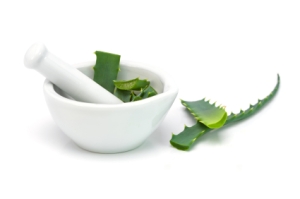 With the arrival of summer comes longer days, warmth and sunshine. A welcome gift for many of us living on the Canadian west coast, where winter months are full of many grey rainy days! The sun offers our best source of Vitamin D, an extremely important nutrient that can boost our immunity against colds and flus; improve our skin health; uplift our mood to make us happier; strengthen our bones; help regulate sugar and insulin; and improve fertility. The sun is surely a welcome friend, being as vital to our overall health as is water and vegetables.
With the arrival of summer comes longer days, warmth and sunshine. A welcome gift for many of us living on the Canadian west coast, where winter months are full of many grey rainy days! The sun offers our best source of Vitamin D, an extremely important nutrient that can boost our immunity against colds and flus; improve our skin health; uplift our mood to make us happier; strengthen our bones; help regulate sugar and insulin; and improve fertility. The sun is surely a welcome friend, being as vital to our overall health as is water and vegetables.
Certain skin disorders, like psoriasis and seborrheic dermatitis, actually do better in the sun and so I usually encourage patients to get as much sunlight as possible on the areas of their bodies that are affected. Of course we need to use wisdom with our exposure by seeking shade during the peak hours – 11 till 3pm – and avoiding a sunburn, which may increase our chances of developing skin cancer later in life.
Some skin conditions, such as rosacea, lupus, melasma (chloasma), and vitiligo, can be negatively affected by the sun, so it is best to protect oneself if you suffer with such a problem. Light clothing, like a long sleeve shirt and a hat, offer the best protection. If a sunscreen is needed then it pays to read the label, as some ingredients, such as Oxybenzone and Retinyl palmitate, are controversial and may actually have damaging health effects. I think it best to avoid using products with such ingredients until conclusive evidence can prove their safety. Reliable sunscreens that are generally deemed safe are those that use minerals, such as zinc or titanium (non-nano sized), to create a reflective barrier on the skin’s surface. When using a sunscreen it is always a good idea to apply it frequently and liberally so that it can offer the expected protection it promises.
 After sun exposure it is always a good idea to rehydrate the skin with a quality moisturizer. My personal favourite method is to apply pure organic aloe vera gel (at least 99%), which I keep cold in the fridge, liberally to all the areas of my sun exposed body – especially my face. Aloe vera has a long history of use all over the world, being esteemed for its ability to rehydrate and rejuvenate the skin. Studies have confirmed that aloe vera is very effective at healing the skin from any type of burn, particularly those caused by solar UV radiation. Once the aloe vera has air dried on, I then like to apply a moisturizing cream containing shea or cocoa butter as the base. Both oils are saturated vegetable fats that help lock moisture into the skin, while also offering good nutrition for proper skin health.
After sun exposure it is always a good idea to rehydrate the skin with a quality moisturizer. My personal favourite method is to apply pure organic aloe vera gel (at least 99%), which I keep cold in the fridge, liberally to all the areas of my sun exposed body – especially my face. Aloe vera has a long history of use all over the world, being esteemed for its ability to rehydrate and rejuvenate the skin. Studies have confirmed that aloe vera is very effective at healing the skin from any type of burn, particularly those caused by solar UV radiation. Once the aloe vera has air dried on, I then like to apply a moisturizing cream containing shea or cocoa butter as the base. Both oils are saturated vegetable fats that help lock moisture into the skin, while also offering good nutrition for proper skin health.
Enjoy your summer everybody!
Dr. Trevor Erikson
